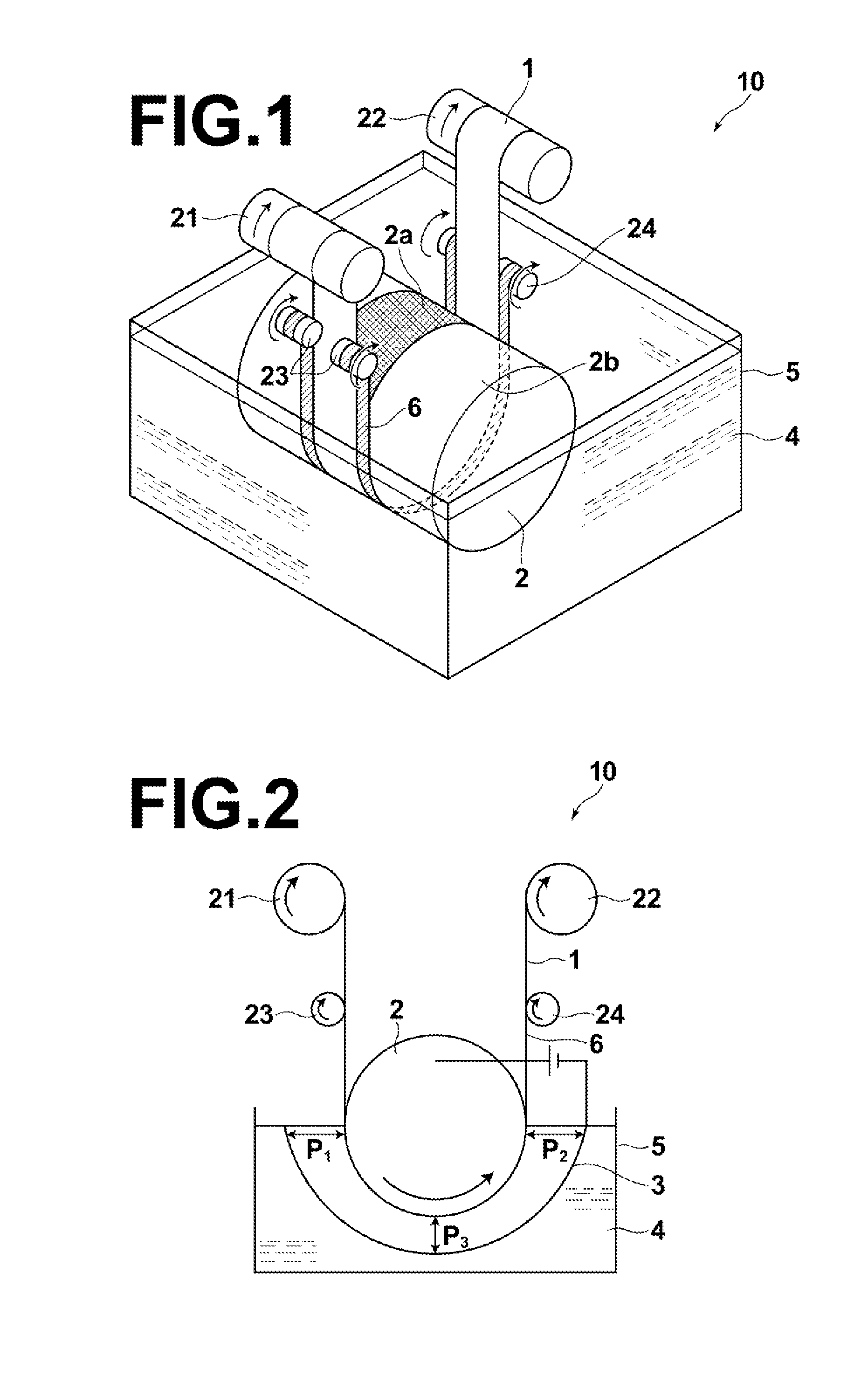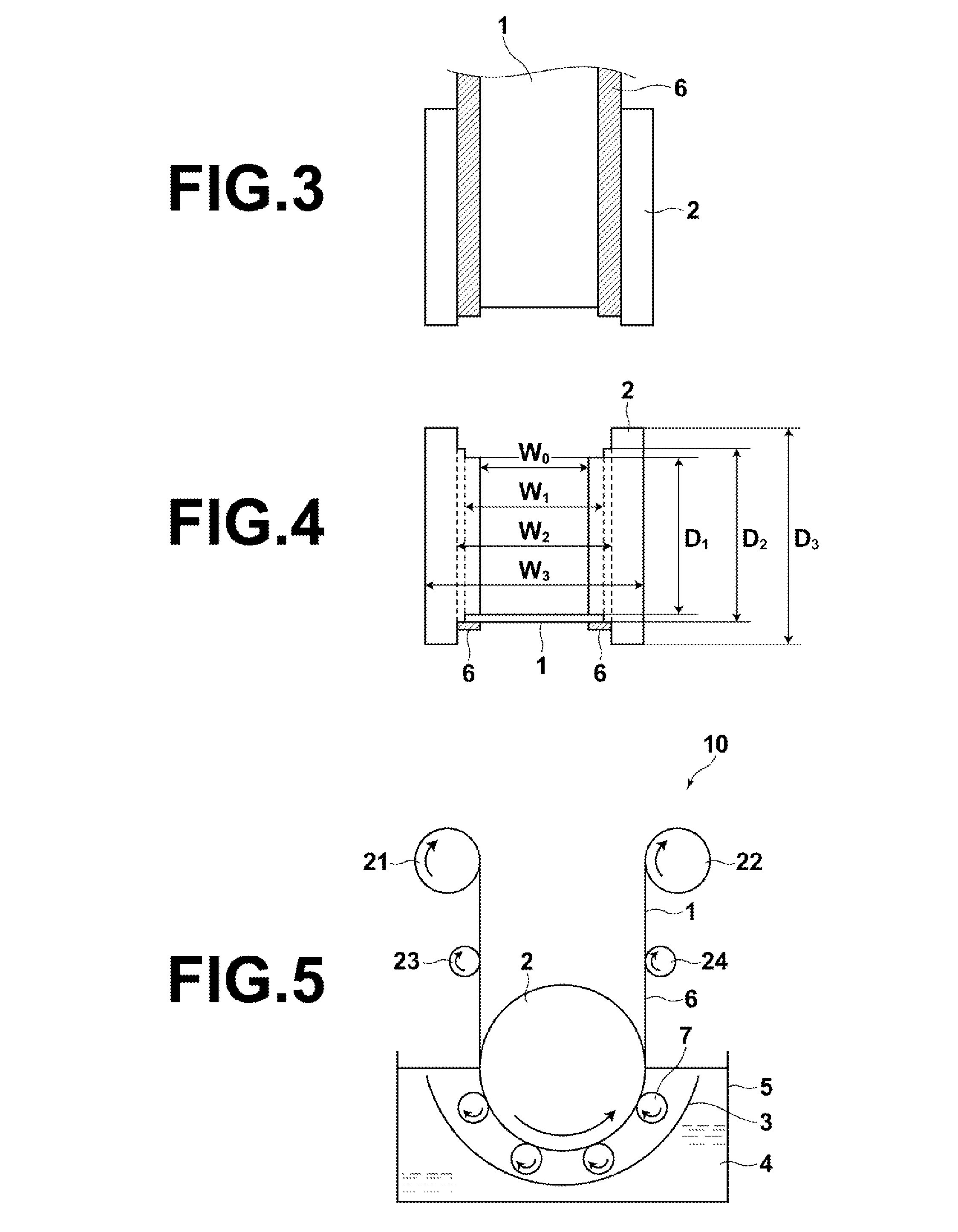Anodizing apparatus
a technology of anodizing apparatus and anodizing heat, which is applied in the direction of manufacturing tools, electric circuits, electric circuits, etc., can solve the problems of difficult continuous anodizing operations, spark generation, and complex apparatus of patent document 5, so as to achieve stable contact resistance, reduce voltage and heat generation, and increase line speed
- Summary
- Abstract
- Description
- Claims
- Application Information
AI Technical Summary
Benefits of technology
Problems solved by technology
Method used
Image
Examples
Embodiment Construction
[0059]Hereinafter, anodizing apparatuses of the present invention will be described in detail with reference to the attached drawings. FIG. 1 is a schematic perspective view that illustrates an anodizing apparatus 10 according to an embodiment of the present invention. FIG. 2 is a schematic sectional view of the anodizing apparatus 10 of FIG. 1. As illustrated in FIG. 1 and FIG. 2, the anodizing apparatus 10 of the present invention includes: a power supplying drum 2 for supporting a strip 1 of an anodizable metal or a strip 1 of a composite conductive metal foil having an anodizable metal on at least one surface thereof (hereinafter, also simply referred to as “strip 1”) in close contact, at least a portion 2a of the power supplying drum which is in close contact with the strip 1 being constituted by a conductive material; opposing electrodes 3 provided to face the power supplying drum 2 (the opposing electrodes 3 is omitted from FIG. 1 in order to facilitate visual understanding o...
PUM
| Property | Measurement | Unit |
|---|---|---|
| temperature | aaaaa | aaaaa |
| temperature | aaaaa | aaaaa |
| thickness | aaaaa | aaaaa |
Abstract
Description
Claims
Application Information
 Login to View More
Login to View More - R&D
- Intellectual Property
- Life Sciences
- Materials
- Tech Scout
- Unparalleled Data Quality
- Higher Quality Content
- 60% Fewer Hallucinations
Browse by: Latest US Patents, China's latest patents, Technical Efficacy Thesaurus, Application Domain, Technology Topic, Popular Technical Reports.
© 2025 PatSnap. All rights reserved.Legal|Privacy policy|Modern Slavery Act Transparency Statement|Sitemap|About US| Contact US: help@patsnap.com



